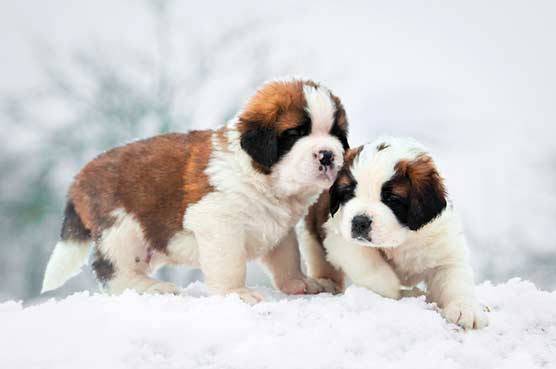Winter can be hazardous for dogs, and it is vital to be aware of the risks to keep your dog healthy. There are both indoor and outdoor winter threats to dogs, especially in the holiday season. Our canine friends, in this regard, need some extra attention in winter to remain sturdy.
You can get them some dog boots and dog homes for winter to confirm their smart health in this season. However, that may not be enough for them to remain away from many health hazards. That’s why, here we have a mind to discuss the most common winter health hazards for dogs and potential ways in which we can prevent them.
Frostbite

Frostbite is basically similar to the chilly climate gnawing on your pet’s fringe parts like its tail, ears, and toes. These specific regions will, in general, get solidified because of frostbites. This is the fundamental condition before hypothermia strikes. Regardless of whether frostbite itself is deadly or not, it can lead to different illnesses that are lethal. Another name for frostbites is congelation as per medicinal language.
Manifestations

The most well-known side effect of a frostbite assault is the staining of your canine’s skin. This happens in light of the fact that the bloodstream in its body diminishes in very low temperatures. As a result, the skin can become extremely pale creating some pale blue-white zones. Alongside such staining, the skin may likewise demonstrate a few pieces of ice conformed to the fringe districts. Contacting such influenced regions can cause torment for your pooch. When you return to a hotter or progressively agreeable zone, the blur territories all of a sudden turn red; also, swollen. This frightful spots can change into skin ulcers or rankling. Unless proper and timely treatment is given, the nearby tissues in those areas kick the bucket and gradually turn dark.
Potential Causes

It is exceedingly far-fetched that a pet with a cautious ace would succumb to frostbites. Frostbites assault the canines that remain outside in cold for quite a while. Successive contact with the virus and water can aggravate the entire difficulty for them. In such conditions, the pooch’s body naturally limits the veins so all organs can proceed with their capacities. In the event the body needs to do as such for quite a while, the blood will eventually quit reaching certain zones making them experience the ill effects of frostbites.
Conceivable Treatment

In the event that you have seen frostbite indications in your pooch, there are a few things you can do to reduce its sufferings a bit. Right off the bat, use either a radiator or a dryer to heat up a little piece of towel. Then, tenderly apply it to influenced locales of the pooch’s body with the goal that they come to an ideal temperature somewhere in the range of 100°F and 108°F. This may give the pooch some impermanent alleviation. However, for a lasting arrangement, take the canine to a solid vet.
Preventive Measures

Since the long introduction to cold is the fundamental purpose for frostbites, ensure your pet is feeling warm enough in a cool environment. Put some agreeable pieces of clothing on it like pooch boots, pooch coats and so forth. This can be a significant step if your dog already suffers from a heart disease or polygenic disease that hampers blood flow.
Facebook
Twitter
Linkedin
Pinterest
Tumblr
Reddit

